Wisconsin Public Television
Transcript: In Wisconsin #925
Air Date: May 12, 2011
Patty Loew:
Welcome to In Wisconsin. Im Patty Loew. This week…
Man:
Oh my God, is that good.
Patty Loew:
A recipe for success as entrepreneurs bottle their dreams in a professional kitchen. Plus a young Tibetan exile finds a home at the Deer Park Buddhist center.
Woman:
Its a very community feeling.
Patty Loew:
Then, who let the cows out?
Man:
Not many people cross cattle our way, thats for sure.
Patty Loew:
Weve got the story of these island cows and this homemade barge for bovines. Plus, a fond farewell for a long time friend next.
Announcer:
Major funding for In Wisconsin is provided by the people of Alliant Energy who bring safe, reliable and environmentally friendly energy to keep homes, neighborhoods and life in Wisconsin running smoothly. Alliant Energy, offering energy-saving ideas on the web. And Animal Dentistry and Oral Surgery Specialists working and providing care for oral disease and dental problems of small companion animals.
Patty Loew:
This week we dedicate our show to In Wisconsins Liz Koerner and we feature her reports as Liz heads into retirement. Many of you already know anything dealing with food is big right now. Wisconsin entrepreneurs sure hope so as they try to bottle their dreams and take them to market. As Liz Koerner discovers, food-based business incubators are a growing trend.
Bill Ignowski:
There we are.
Liz Koerner:
Most days Bill Ignowski sells suits at JC Penney in Green Bay.
Bill Ignowski:
A wise choice.
Liz Koerner:
A couple hours north in Sister Bay, Joanne Penny balances the books at Good Samaritan Society Scandia Village Retirement Center. At first glance, it might seem like they have nothing in common, but look again. They share a passion for producing the best recipe theyve ever tasted and bottling it.
Bill Ignowski:
And oh my god, is that good.
Liz Koerner:
Ignowski created Papa Bills Pasta Sauce from an old recipe from southern Italy. He and his wife Karla also make Hot Diggity Dog Sauce.
Bill Ignowski:
Theres a saying in southern Italy that the tomato is ready when it falls off the vine in your hand, so ingredients are very, very important.
Joanne Penny:
You can see chilly pepper and garlic in there.
Liz Koerner:
Penny brought home a love of Southeast Asian flavors after living in Thailand in the 1970s. Now on her days off, she is cooking up dipping sauces like Cherry Ginger and Spicy Sweet and Sour, with help from her husband, Jim and her daughter Jasmine.
JoAnne Penny:
Theres four flavors, sweet, sour, salt and then that little chili pepper flavor, that zing. Everybody who tried it would call me up after they tasted it and said its so good we ate the whole thing.
Liz Koerner:
Many people dream of turning their favorite recipe into the fountain of cash, but as Ignowski and Penny found out, getting your business off the ground can be costly. The state requires them to use a commercially licensed kitchen to ensure food safety. Something that would be cost prohibitive on your own.
Bill Ignowski:
Entering into the food business would be a half million dollar gamble. That would freeze out 99% of the people that want to get in on this.
Liz Koerner:
The Farm Market Kitchen in Algoma rents their kitchen for $12 an hour. A kitchen that comes packed with specialized equipment.
Bill Ignowski:
This is a cooking vat. And what it does is allows us to cook 35 gallons of sauce at one time.
Liz Koerner:
The Farm Market Kitchen offers another important ingredient to those just starting out. Expert advice on running a food-based business. Mary Pat Carlson is the director.
Mary Pat Carlson:
Really, the kitchen is just a tool, and the support services that you provide to those that are using it is really the key.
Liz Koerner:
The support services start with creating a business plan and continue with advice on things like label requirements, trade marks and UPC codes. Each stage of growth comes with a whole host of challenges. One of them is finding stores to sell your product. Cooks Corner in Green Bay offers Ignowskis sauces because local products sell.
Man:
People do come in, especially tourists, looking for things made in Wisconsin. And its a big deal for us.
Liz Koerner:
In addition to outlets in Door County Sentry Hilldale in Madison offers Pennys sauces. But unless friends or family members deliver them for free, shell have to pay a distributor.
JoAnne Penny:
Theyll take 30%. Then I kept thinking, well, would that even cover my overhead and everything like that? I have to really think about that.
Liz Koerner:
Many other questions come up as businesses grow that require help from the community.
Mary Pat Carlson:
We have really strong linkages to the educational institutions in the area. We have good partnerships with the financial institutions. We build those things in.
Liz Koerner:
Penny and Ignowski have been able to grow their businesses because of the support of the Farm Market Kitchen. But bottom line, their success is a product of working long hours for a modest initial return.
JoAnne Penny:
I use every bit of my time. And when Im not doing that Im usually exhausted sleeping.
Bill Ignowski:
Do you want money out of this? Its not going the happen right away. You have to look at it as an adventure.
Patty Loew:
Since the Farm Market Kitchen opened ten years ago, theyve had 100 new businesses use their services. Currently 50 are signed up. Take a look at this map. It shows where eight food-based business incubators are now located in Wisconsin. Weve learned there are two more in development.
Whats old is new again at least when it comes to Wisconsins barns. Drive down any rural road in our state and youll see weathered barns that have withstood the test of time. In back in 2003 Liz Koerner first met Rick Bott. Today, hes semi-retired, but continues to be a strong advocate for recycling barn wood and giving new lives to these monuments of our immigrant past near Baraboo.
Rick Bott:
Ive always had a passion for these old barns, since I was a kid. I have a great deal of respect for the people who originally built these. These barns stand as a monument to our ancestors who settled here. Unfortunately, many buildings are disappearing. In a lot of cases, theyre simply burned for fire practice, or theyre allowed to deteriorate to the point they basically settle into the landscape.
What we try to do is reuse this resource. And we can do anything from salvaging the barn siding that you use for paneling, but we can also remill it, we can re-saw it, we can make it into flooring, trim. We build furniture out of it. The old wood has a beauty and quality and a patina that is unsurpassed by any other material that you can get. This was milled from barn siding off a barn in northern Illinois that rumor has it Al Capone stabled horses in for a while. The holes here are from buck shot. Somebody must have took out a pigeon or something up against those walls.
We pay a nominal fee for salvage rights to the building, but primarily what were doing is were taking down a structure that is becoming a danger to our client. Possibly to the point where its a liability, because of insurance, and because of the taxes. Its not a case of going out and taking a crowbar to a building and hauling it away in a pickup truck. What you have to do is be able to utilize as much of the structure as possible. Not just the most premium parts.
Man:
This one was split already.
Rick Bott:
Okay, the point is to not produce kindling.
I got started doing this back in the 1970s when I was working my way through college. Wed take a few barns down and sell materials from them. Gradually, we developed techniques for using more and more of the buildings. It was a learning process. The closest weve come to ever really screwing up. There was a couple times the building tipped a little faster than we thought it was going to, and we just barely out of harms way. This is not something that you want amateurs doing, because the learning curve can be quite short if you dont get it right.
We come in and well strip the siding off very carefully using specialized tools to pry it off, so we dont damage it. We make a series of pre-cuts in the structure in very key places. Then we chain the building up and tip it over. It goes over just like pulling over a large tree. It makes a big crunch and everybody gets a kick out of it. And if we do it right, we damage very little material.
Wisconsin as state was blessed 150 years ago with some of the finest standing timber in the world. Especially some of the old growth white pine. These were massive trees that grew in the northern part of the state, often they would grow six or eight feet apart and theyd be six feet in diameter. People would speak about them like they were standing in a cathedral. These trees took centuries to grow, often 500 years. Because they grew so slowly, the quality of the wood was far superior than lumber you can possibly get today. Youll never see lumber like that again, its just not going to occur, except in very remote regions.
The house is built almost completely out of recycled materials. They came out of old barns, old warehouses, all of it saved from landfills. When you work with this kind of wood, it just puts everything else out there to shame. This is a good example of post and beam work. This is a little more finished than a lot of buildings we do. We used large power planers, that surfaced the timber. We take a little bit of the old rough surface off and then you can finish the beams with either oil or polyurethane or good quality shellac. Theres no stain on any lumber in the building. Its all original patina and you see the deep, rich tones you get from it. Most of what youre looking at here would be in a landfill. This is recycling on a grand scale. I couldnt achieve this look or finish if I was using new lumber. The only way you can really do this and do this effectively is to use the old growth lumber from the old barns and the old warehouses. Here, it will still have another 100 years worth of life.
Whenever we take down one of these old buildings and see it come down, we always have a little bit of regret, because theyre such magnificent structures. Wisconsin wouldnt be Wisconsin if we didnt have these old barns o the landscape. Theyre such an icon of the state. If the building has to come down, its far wiser to at least use as much of it as we can and recycle it and give parts of the old barn new life.
Patty Loew:
These days Rick Bott uses Amish crews to take down most of the barns for his projects. He just finished turning a barn into a guest house near Sauk City.
They call it the cattle crossing and its like nothing youll see anywhere else in Wisconsin. The Rowe familys unique spring event is knee deep in tradition. So this week In Wisconsin reporter Liz Koerner takes you to their private island in the Fox River bordering Marquette and Green Lake Counties.
Liz Koerner:
Even the youngest members of the Rowe family get all duded up on someone special day each spring.
Man:
Some of my earliest memories are coming up here when I was like three, four, five years old.
Liz Koerner:
The very large extended Rowe family headed by Dave and Cindy come together this time of year for an unusual family gathering. And family is what it’s all about.
Dave Rowe:
It seems to get bigger and bigger every year.
Liz Koerner:
They call it the cattle crossing, and it’s like nothing you’ll see anywhere else in Wisconsin.
Dave Rowe:
Not many people cross cattle our way, that’s for sure.
Liz Koerner:
The Rowe family, brothers and sisters, aunts and uncles, all lend a hand.
Man:
Dennis, why don’t you jump on with Luke, okay?
Liz Koerner:
To ferry beef cattle across a narrow strip of water to a grassy island they own. It straddles the Marquette and Green Lake county line. The family rents this rich summer pastureland to a beef rancher which trucks about 100 of his animals from the Stevens Point area, an hour and a half away. The cattle owner says the long drive has become necessary.
Sunny Marquard:
Where we come from, pastureland is hard to come by. I mean, there’s not a lot of it available.
Sunny Marquard:
There is a lot of land around, but most of it doesn’t have fences. In order to fence it would be extremely expensive. It’s nowadays it’s used for crop land. Nobody’s going to use that for pasture.
Liz Koerner:
They send the calves over on the barge first, then their mothers are eager to follow. They used to let the cattle swim across, but the last time they did that, they had a problem. The cattle figured they could get off the island the same way they got on.
Dave Rowe:
They ended up at a neighbor’s farm eating his corn out of his crib.
Liz Koerner:
The barge itself is an invention dreamed up and handcrafted by the Rowe family.
Dave Rowe:
It’s got 54 55-gallon drums under it. I think we have it figured out that it actually holds 45,000 pounds.
Liz Koerner:
It’s the job of the athletic younger cousins on top of the barge to haul on the overhead cable. On this day, they can carry only seven cows at a time because the wind and the current make the barge hard to maneuver.
Casey Eggleston:
Basically we got to keep the barge straight. We’re getting pushed by the current. It was very windy, too, and it’s always trying to push the barge downstream. We have to keep it straight between the corrals.
Liz Koerner:
While it may look like it, the guys on top aren’t actually pulling the barge across the water all on their own, but they used to.
Dave Rowe:
When we first started this, we used to manually pull that barge all across the river and a friend who lives in the area said, hey, how about if I just push you guys across with a boat? Lightbulb goes on. Sounds pretty good.
Liz Koerner:
Even with a motorboat, it’s hard work for the guys on top. Greg Rowe explains why he keeps coming back.
Greg Rowe:
Its a great weekend. Its really good for the family. The island is a thing that keeps our family close. Every weekend, every summer we’re up here. Cattle move weekend, it’s our fun, really weird, special activity that we do together.
Liz Koerner:
There are 17 cousins in the Rowe family. Some travel up to five hours to help out with the cattle crossing. Some even go to extremes.
Danielle Rowe:
They said my name, I walked across the stage, I kept walking until I got to my car and got to the island as fast as I could.
Reporter:
Why?
Danielle Rowe:
Because it’s my family. I love this.
Liz Koerner:
After many, many trips to the island, mothers are reunited with their calves. Then they open the gate of the holding corral and the cattle head for high pasture. It’s been another successful Rowe family cattle crossing.
Casey Eggleston:
Yeah. It’s great. It’s great. We love doing it every year. It’s a really special place for our entire family. We love coming up here.
Patty Loew:
The Rowe family will be wading in the waters of the Fox River again later this spring to usher the cattle to the island.
Our final report this week is about courage and determination. For Tibetans, the only way to escape Chinese oppression was to flee their homeland. And for some, travel halfway around the world to find peace. In 2008, Liz Koerner introduced you to a young exile getting an degree in the medical profession with the hopes of one day of helping the poor in Tibet. Those dreams are coming through with the help of the Deer Park Buddhist Temple in the Town of Dunn.
Jo Garrett:
Tibetans gather here on special days to pray and to celebrate. The Deer Park Buddhist Center welcomes Tibetan exiles who want to keep their religion and culture alive. Tenzin Pelkyi has come to Deer Park to be with other Tibetans on this holiday. Its the 6th of July, the birthday of their spiritual leader, his holiness the Dalai Lama.
Tenzin Pelkyi:
This is like the same as the monasteries, the temples in India. It’s a great replica of the life that we used to have. It’s a very community feeling.
Jo Garrett:
Like many refugees, Pelkyi has felt the pain of being separated from loved ones. She was born in a remote Tibetan refugee settlement in the mountains of northern India.
Tenzin Pelkyi:
It felt very small. You knew everybody. If there was like one new person in the town it was like everybody would know.
Jo Garrett:
She remembers how good it felt to live in a place where she was surrounded by other Tibetans.
Tenzin Pelkyi:
Theres a center for Tibetan government in exile. We have all the offices there. The place is very nationalistic, everybody is so proud. Yeah, I=m Tibetan.
Jo Garrett:
Many Tibetans in the refugee settlement saw America as a land of opportunity. When the United States opened its borders to a limited number of refugees in 1992, Tibetan families in India were faced with a tough choice.
Tenzin Pelkyi:
So when that news came to India, there was a question like who will go? So everybody thought all right, we=ll pick one name from each family and there would be no hard feelings. My mom was one of those 1,000 people who got selected.
Jo Garrett:
Pelkyi’s mother left behind a husband and four young children.
Tenzin Pelkyi:
My mom left for the US when I was seven, and at that time the youngest was around 2 or 3 years old.
Jo Garrett:
Through time, Pelkyi developed a deep devotion to her father, a man who escaped from Tibet to India after fighting in the Revolutionary Army.
Tenzin Pelkyi:
He talked about Tibet a lot and that kind of kept Tibet alive in our family. He always wanted to go back, but he never got to so I always think, it was one of my dreams to go back with him.
Jo Garrett:
In the year 2000, Pelkyi’s father made the heartbreaking sacrifice to send his children to join their mother in America. He chose to stay behind. Pelkyi was 16 years old.
Tenzin Pelkyi:
My dad, he wanted all of us to be here, because he knew we would have a better future than we would have in India.
Jo Garrett:
Pelkyi and her siblings moved in with their mother in Madison. Once here, she focused getting an education. After completing her senior year of high school in Madison, she began working during the summer at an assisted living facility. She’s also studying for a degree in nursing at the University of Wisconsin in Milwaukee. Her father passed away a few years ago, but she hasn’t given up entirely on their shared dream.
Tenzin Pelkyi:
I hope that someday I’ll be able to work with Tibetans, and especially Tibetans who are in Tibet who are in dire need of good healthcare and education.
Jo Garrett:
Until then, Pelkyi gives time to the Tibetan community here at home as a volunteer at the new Deer Park Temple. Her dedication to helping others stems from her upbringing in India, where the Buddhist religion permeates everyday life.
Tenzin Pelkyi:
You have to always think about the community. It is always about the larger whole, rather than thinking of your individual.
Jo Garrett:
She says helping at Deer Park helps her feel connected to her culture and her past.
Tenzin Pelkyi:
It gives me my sense of belonging.
Patty Loew:
Since we featured Tenzins story in 2008, she has completed her nursing degree and is working at Madison Central Wisconsin Center with severely disabled residents. She plans to get a masters degree in public health nursing. She also got married in the fall of 2009 to a tibetan man. Tenzin is still waiting for an opportunity to return to her homeland.
Now heres a look at some of the new reports were working on for this seasons final edition of In Wisconsin.
Frederica Freyberg:
Its a salute to Wisconsins greatest generation. This is In Wisconsin reporter Frederica Freyberg. Come along on the Badger Honor Flight.
Man:
I was wondering a little while ago if I was the only guy who had tears in my eyes.
Frederica Freyberg:
An emotional day in Washington, DC, as they see the memorials built as tribute to their service.
Adam Schrager:
Trash pick up in the city of Barron starts out like any other in the state of Wisconsin. Im In Wisconsin reporter Adam Schrager, and where it goes here in Barron County is unlike any other place in the state of Wisconsin.
Man:
There are better ways to handle trash, and there are better ways to make electricity. With a waste energy facility you take care of both issues.
Patty Loew:
Plus in our Quest environmental reporting project, a young spoken word artist weighs in.
Man:
As the temperature rises, we reach boiling points. Attitudes of those around us rise quicker than mercury.
Patty Loew:
Extreme has caused more deaths in Wisconsin since 1982 than all other natural disasters combined.
Man:
As the temperature rises, so do attitudes, death rates, bills and ice cream stocks.
Patty Loew:
Join us for the last In Wisconsin of the season, and those new reports next Thursday at 7:30 right here on Wisconsin Public Television.
You can keep tabs on what were working on this summer by stopping by our interactive blog called the Producers Journal. Well provide updates on the reports were working on, and what is happening behind the scenes on In Wisconsin. Check out the Producers Journal at wpt.org. Then click on In Wisconsin, and take a look at some of our other reports while youre there.
Finally this week, goodbyes to two of our Wisconsin Public Television colleagues. Theyve informed and entertained all of us for the better part of the past three decades. Liz Koerner, whose stories we featured this week started out as a student production assistant, and over the course of three decades worked her way up as a director, producer and reporter. Shes directing tonights program. Liz did many jobs, and she did them well. Also retiring, videographer Chuck France who lugged his camera gear around the world and across Wisconsin. They both contributed countless hours of dedication and hard work. Well miss their friendship and their expertise. We leave you with video shot by Chuck France along the Arkansaw Creek in Pepin County. Have a great week In Wisconsin.
Announcer:
Major funding for In Wisconsin is provided by the people of Alliant Energy who bring safe, reliable and environmentally friendly energy to keep homes, neighborhoods and life in Wisconsin running smoothly. Alliant Energy, offering energy-saving ideas on the web. And Animal Dentistry and Oral Surgery Specialists working and providing care for oral disease and dental problems of small companion animals.
Search Episodes
Related Stories from PBS Wisconsin's Blog

Donate to sign up. Activate and sign in to Passport. It's that easy to help PBS Wisconsin serve your community through media that educates, inspires, and entertains.
Make your membership gift today
Only for new users: Activate Passport using your code or email address
Already a member?
Look up my account
Need some help? Go to FAQ or visit PBS Passport Help
Need help accessing PBS Wisconsin anywhere?

Online Access | Platform & Device Access | Cable or Satellite Access | Over-The-Air Access
Visit Access Guide
Need help accessing PBS Wisconsin anywhere?

Visit Our
Live TV Access Guide
Online AccessPlatform & Device Access
Cable or Satellite Access
Over-The-Air Access
Visit Access Guide
 Passport
Passport





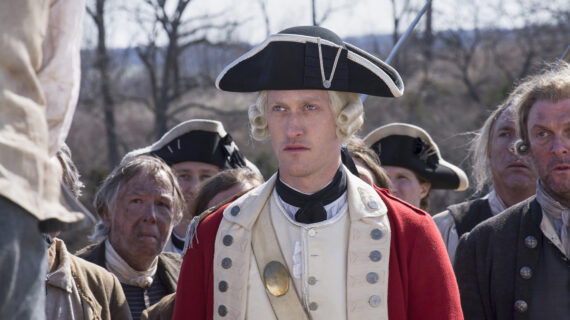
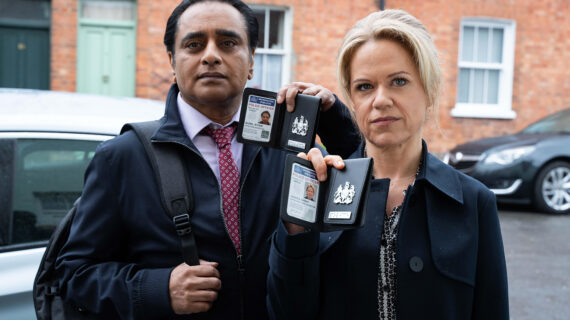
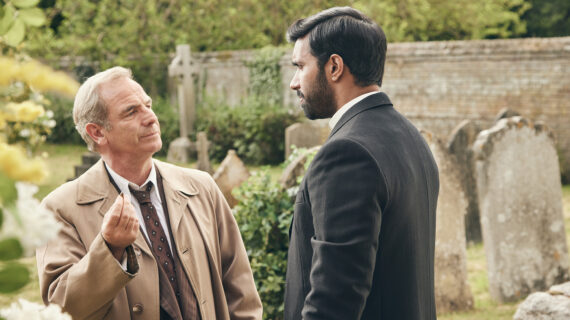


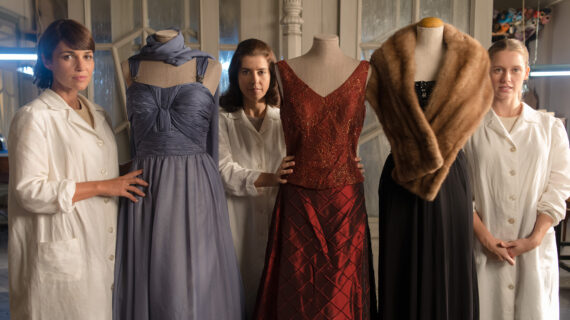
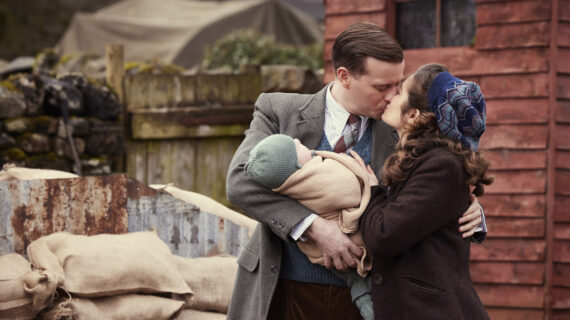

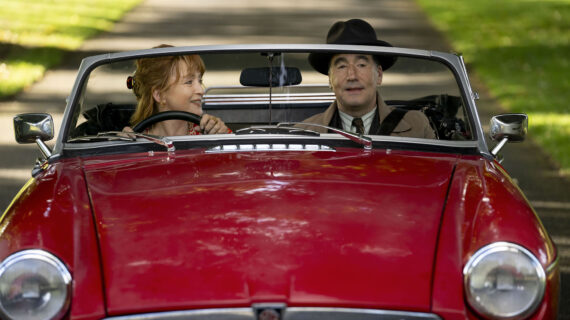

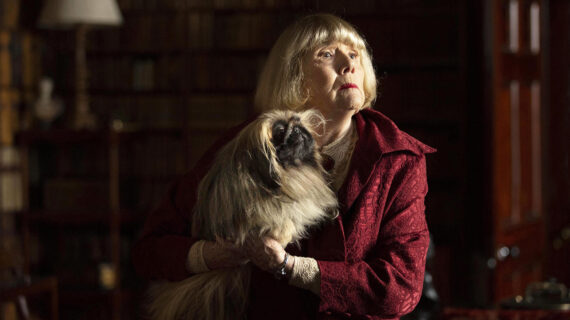

Follow Us